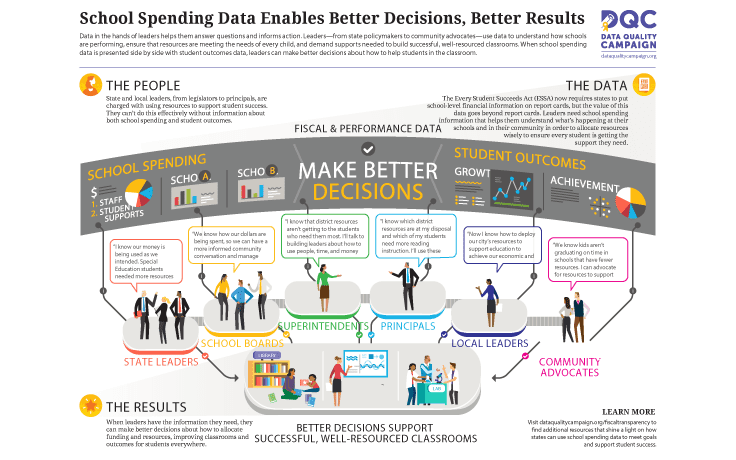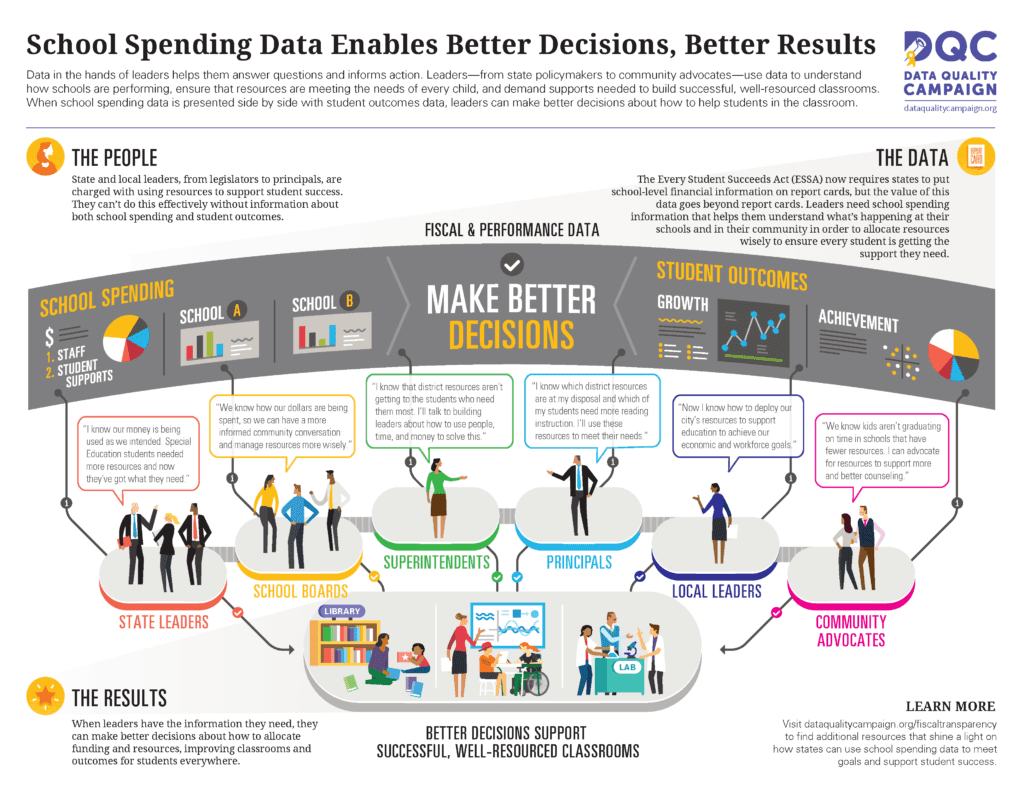Under the Every Student Succeeds Act (ESSA), states are required to publish school-level spending data on report cards. As most states have previously only published district-level spending data, this is a powerful mandate and has the potential to provide important data to stakeholders at all levels that can be used to support students. But state leaders must go beyond compliance by sharing this information side by side with student outcomes data and equipping leaders with it throughout the year – rather than only in report cards, as required by law. Here are some of DQC’s resources that highlight why this data is important and how it can be used to support students:
What Use Looks Like in Action
School Spending Data Enables Better Decisions, Better Results illustrates what it looks like when leaders – from state and local policymakers to principals and community advocates – use school-level spending data in their roles to better support students. Providing this data alongside student outcomes data, and with appropriate context, will empower leaders to better understand how resources are being allocated, answer important questions about the students being served by schools, and make more targeted education investments.
The State Role in Improving Fiscal Transparency
State leaders are charged with ensuring that financial data is no longer siloed, but rather integrated into conversations about how states, districts, and schools can meet their education goals.
- In an analysis piece for The 74, DQC’s Director of Policy and Advocacy Brennan McMahon Parton identifies five things state leaders should keep in mind as they prepare to include school-level spending data in report cards for the first time.
- Using Financial Data to Support Student Success takes a deeper dive into the steps state leaders can take to meet ESSA’s fiscal transparency requirements and improve transparency with the public.



